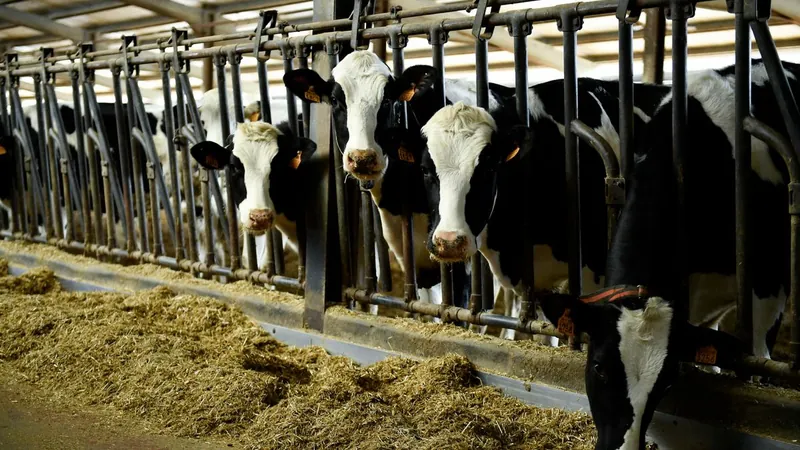
Mysterious Bird Flu Case in Missouri Raises Alarms Among Experts – Are We Prepared for an Outbreak?
2024-09-23
Introduction
Recent reports reveal that the U.S. has seen over a dozen cases of the H5N1 bird flu virus in humans this year alone. Alarmingly, the most recent case, identified on September 6 by the Centers for Disease Control and Prevention (CDC), involves a Missouri resident with no known exposure to infected animals, leaving experts baffled and concerned about the implications.
Current Risk Assessment
While the CDC reassures the public that the risk of H5N1 transmission remains low, particularly as there have been no signs of secondary infection among close contacts of the patient, there is an unmistakable unease regarding the potential for this virus to adapt and spread. Dr. Nahid Bhadelia, an authority on emerging infectious diseases, echoed this sentiment, noting that a lack of seasonal flu upticks is somewhat reassuring, but the nature of the Missouri case raises questions about surveillance effectiveness.
Details of the Patient Case
The patient, who had underlying health issues, was hospitalized after experiencing several acute symptoms, including chest pain and gastrointestinal distress. Initial tests showed positive for influenza A; however, further examinations confirmed H5N1. Strikingly, the genetic makeup of the virus seems closely aligned with strains infecting cows, complicating the quest for its transmission source—especially since there have been no confirmed cases of H5N1 in Missouri’s cattle as of recent findings.
Concerns about Cattle Infections
The potential link to cattle infections is alarming, particularly as the state has historically recorded substantial poultry infections (around 600,000). Experts like Seema Lakdawala of Emory University criticize the inadequate testing of livestock, stating, “We do not have a good handle on how many cows are actually infected.” Alarmingly, as of mid-July, only 17 out of approximately 60,000 dairy cows in Missouri had been tested, showcasing a glaring oversight in monitoring agricultural health.
Transmission Routes
One plausible transmission route includes the consumption of raw, unpasteurized cow milk, which could carry high loads of the infectious virus. "An infected cow can have millions of viral particles per milliliter of milk," Lakdawala warned. Unpasteurized products can harbor various pathogens, raising further apprehensions about the safety of consuming raw dairy.
Household Contact Investigation
In an intriguing twist, one of the household contacts of the Missouri patient developed similar symptoms on the same day but has not yet been tested for influenza. Investigating this link is critical to understanding H5N1's potential spread; however, experts maintain that the lack of evidence for person-to-person transmission remains reassuring.
Public Health Responses
To enhance public health safety, the CDC is strengthening surveillance strategies, which include testing protocols for individuals interacting with farm animals. In a recent effort, the agency collaborated with Ohio health officials to conduct antibody testing among veterinarians, emphasizing the importance of ongoing monitoring.
Conclusion and Call to Action
In light of these events, it’s evident that while immediate risks may seem mitigated, the H5N1 virus's capacity for mutation and its historical behaviors warrant heightened vigilance. Stakeholders, farmers, and health authorities need to step up testing protocols and monitoring practices as they remain vigilant against the uncharted waters of avian influenza. Stay informed and prepared—this mystery could have implications for us all.


 Brasil (PT)
Brasil (PT)
 Canada (EN)
Canada (EN)
 Chile (ES)
Chile (ES)
 España (ES)
España (ES)
 France (FR)
France (FR)
 Hong Kong (EN)
Hong Kong (EN)
 Italia (IT)
Italia (IT)
 日本 (JA)
日本 (JA)
 Magyarország (HU)
Magyarország (HU)
 Norge (NO)
Norge (NO)
 Polska (PL)
Polska (PL)
 Schweiz (DE)
Schweiz (DE)
 Singapore (EN)
Singapore (EN)
 Sverige (SV)
Sverige (SV)
 Suomi (FI)
Suomi (FI)
 Türkiye (TR)
Türkiye (TR)